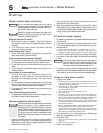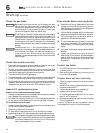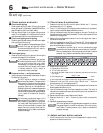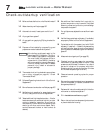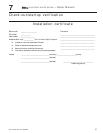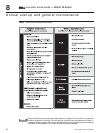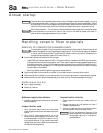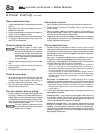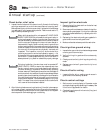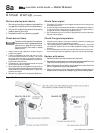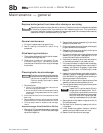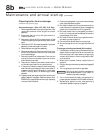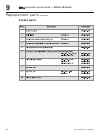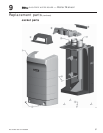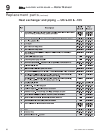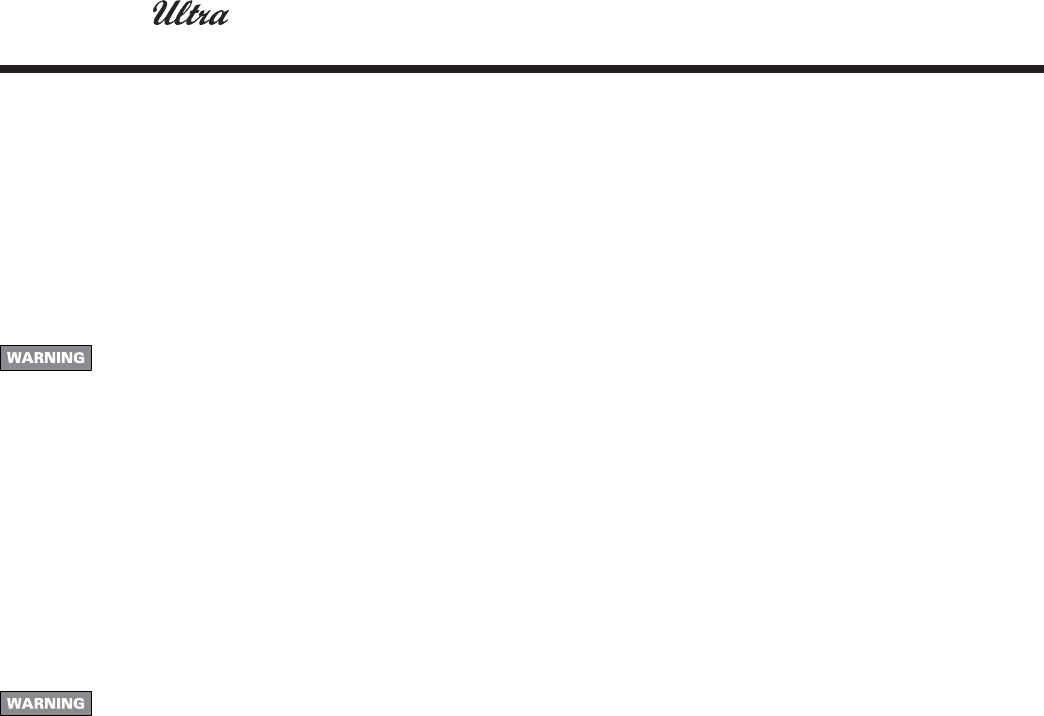
GAS-FIRED WATER BOILER — Boiler Manual
Part number 550-101-233/0903
31
Inspect ignition electrode
1. Remove the ignition electrode from the boiler heat
exchanger access cover.
2. Remove any white oxides accumulated on the ignition
electrode using sandpaper. If the ignition electrode
cannot be cleaned satisfactorily, replace ignitor with
a new one.
3. Replace ignition electrode, making sure gasket is in
good condition and correctly positioned.
4. Make sure the electrodes are parallel to each other.
Check ignition ground wiring
1. Inspect boiler ground wire from heat exchanger access
cover to ground terminal strip.
2. Verify all wiring is in good condition and securely
attached.
3. Check ground continuity of wiring using continuity
meter.
4. Replace ground wires if ground continuity is not
satisfactory.
Check all boiler wiring
1. Inspect all boiler wiring, making sure wires are in
good condition and securely attached.
Check control settings
1. Set the control module display to Parameter mode
and check all settings. Adjust settings if necessary. See
Ultra Control Supplement for details.
2. Check settings of external limit controls (if any) and
adjust if necessary.
Annual startup
(continued)
Check boiler relief valve
1. Inspect the relief valve and lift the lever to verify flow as in the following
warnings, excerpted from a relief valve manufacturer’s warning label.
Before operating any relief valve, ensure that it is piped with its discharge
in a safe area to avoid severe scald potential. Read manual section 3,
page 12, before proceeding further.
Safety relief valves should be reinspected AT LEAST ONCE
EVERY THREE YEARS, by a licensed plumbing contractor or
authorized inspection agency, to ensure that the product has
not been affected by corrosive water conditions and to ensure
that the valve and discharge line have not been altered or
tampered with illegally. Certain naturally occurring conditions
may corrode the valve or its components over time, rendering
the valve inoperative. Such conditions are not detectable unless
the valve and its components are physically removed and
inspected. This inspection must only be conducted by a
plumbing contractor or authorized inspection agency — not
by the owner. Failure to reinspect the boiler relief valve as directed
could result in unsafe pressure buildup, which can result in
severe personal injury, death or substantial property damage.
Following installation, the valve lever must be operated AT
LEAST ONCE A YEAR to ensure that waterways are clear.
Certain naturally occurring mineral deposits may adhere to
the valve, rendering it inoperative. When manually operating
the lever, water will discharge and precautions must be taken to
avoid contact with hot water and to avoid water damage. Before
operating lever, check to see that a discharge line is connected to
this valve directing the flow of hot water from the valve to a
proper place of disposal. Otherwise severe personal injury may
result. If no water flows, valve is inoperative. Shut down boiler
until a new relief valve has been installed.
2. After following the above warning directions, if the relief valve weeps or
will not seat properly, replace the relief valve. Ensure that the reason for
relief valve weeping is the valve and not over-pressurization of the system
due to expansion tank waterlogging or undersizing.
8a



